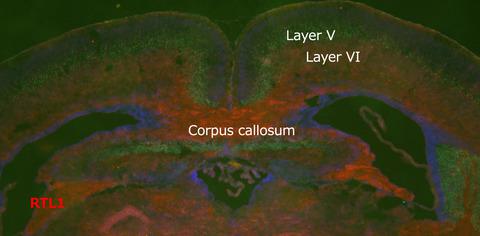当前位置:
X-MOL 学术
›
Genes Cells
›
论文详情
Our official English website, www.x-mol.net, welcomes your
feedback! (Note: you will need to create a separate account there.)
The role of eutherian‐specific RTL1 in the nervous system and its implications for the Kagami‐Ogata and Temple syndromes
Genes to Cells ( IF 1.3 ) Pub Date : 2021-01-23 , DOI: 10.1111/gtc.12830 Moe Kitazawa 1 , Akito Sutani 1, 2 , Tomoko Kaneko-Ishino 3 , Fumitoshi Ishino 1
Genes to Cells ( IF 1.3 ) Pub Date : 2021-01-23 , DOI: 10.1111/gtc.12830 Moe Kitazawa 1 , Akito Sutani 1, 2 , Tomoko Kaneko-Ishino 3 , Fumitoshi Ishino 1
Affiliation

|
RTL1 (also termed paternal expressed 11 (PEG11)) is considered the major imprinted gene responsible for the placental and fetal/neonatal muscle defects that occur in the Kagami–Ogata and Temple syndromes (KOS14 and TS14, respectively). However, it remains elusive whether RTL1 is also involved in their neurological symptoms, such as behavioral and developmental delay/intellectual disability, feeding difficulties, motor delay, and delayed speech. Here, we demonstrate that the mouse RTL1 protein is widely expressed in the central nervous system (CNS), including the limbic system. Importantly, two disease model mice with over‐ and under‐expression of Rtl1 exhibited reduced locomotor activity, increased anxiety, and impaired amygdala‐dependent cued fear, demonstrating that Rtl1 also plays an important role in the CNS. These results indicate that the KOS14 and TS14 are neuromuscular as well as neuropsychiatric diseases caused by irregular CNS RTL1 expression, presumably leading to impaired innervation of motor neurons to skeletal muscles as well as malfunction of the hippocampus‐amygdala complex. It is of considerable interest that eutherian‐specific RTL1 is expressed in mammalian‐ and eutherian‐specific brain structures, that is, the corticospinal tract and corpus callosum, respectively, suggesting that RTL1 might have contributed to the acquisition of both these structures themselves and fine motor skill in eutherian brain evolution.
中文翻译:

真兽类特异性 RTL1 在神经系统中的作用及其对 Kagami-Ogata 和 Temple 综合征的影响
RTL1 (也称为父本表达 11 ( PEG11 ))被认为是导致 Kagami-Ogata 和 Temple 综合征(分别为 KOS14 和 TS14)中发生的胎盘和胎儿/新生儿肌肉缺陷的主要印记基因。然而, RTL1是否也与他们的神经系统症状有关,如行为和发育迟缓/智力障碍、进食困难、运动迟缓和言语迟缓,目前仍不清楚。在这里,我们证明小鼠 RTL1 蛋白在中枢神经系统 (CNS) 中广泛表达,包括边缘系统。重要的是,两种Rtl1过度表达和不足表达的疾病模型小鼠表现出运动活性降低、焦虑增加以及杏仁核依赖性暗示恐惧受损,这表明Rtl1在中枢神经系统中也发挥着重要作用。这些结果表明,KOS14和TS14是由中枢神经系统RTL1表达不规则引起的神经肌肉和神经精神疾病,可能导致运动神经元对骨骼肌的神经支配受损以及海马-杏仁核复合体的功能障碍。令人相当感兴趣的是,真兽类特异性RTL1在哺乳动物和真兽类特异性大脑结构中表达,即分别在皮质脊髓束和胼胝体中,这表明RTL1可能有助于获得这些结构本身和精细结构。真兽类大脑进化中的运动技能。
更新日期:2021-03-08
中文翻译:

真兽类特异性 RTL1 在神经系统中的作用及其对 Kagami-Ogata 和 Temple 综合征的影响
RTL1 (也称为父本表达 11 ( PEG11 ))被认为是导致 Kagami-Ogata 和 Temple 综合征(分别为 KOS14 和 TS14)中发生的胎盘和胎儿/新生儿肌肉缺陷的主要印记基因。然而, RTL1是否也与他们的神经系统症状有关,如行为和发育迟缓/智力障碍、进食困难、运动迟缓和言语迟缓,目前仍不清楚。在这里,我们证明小鼠 RTL1 蛋白在中枢神经系统 (CNS) 中广泛表达,包括边缘系统。重要的是,两种Rtl1过度表达和不足表达的疾病模型小鼠表现出运动活性降低、焦虑增加以及杏仁核依赖性暗示恐惧受损,这表明Rtl1在中枢神经系统中也发挥着重要作用。这些结果表明,KOS14和TS14是由中枢神经系统RTL1表达不规则引起的神经肌肉和神经精神疾病,可能导致运动神经元对骨骼肌的神经支配受损以及海马-杏仁核复合体的功能障碍。令人相当感兴趣的是,真兽类特异性RTL1在哺乳动物和真兽类特异性大脑结构中表达,即分别在皮质脊髓束和胼胝体中,这表明RTL1可能有助于获得这些结构本身和精细结构。真兽类大脑进化中的运动技能。











































 京公网安备 11010802027423号
京公网安备 11010802027423号